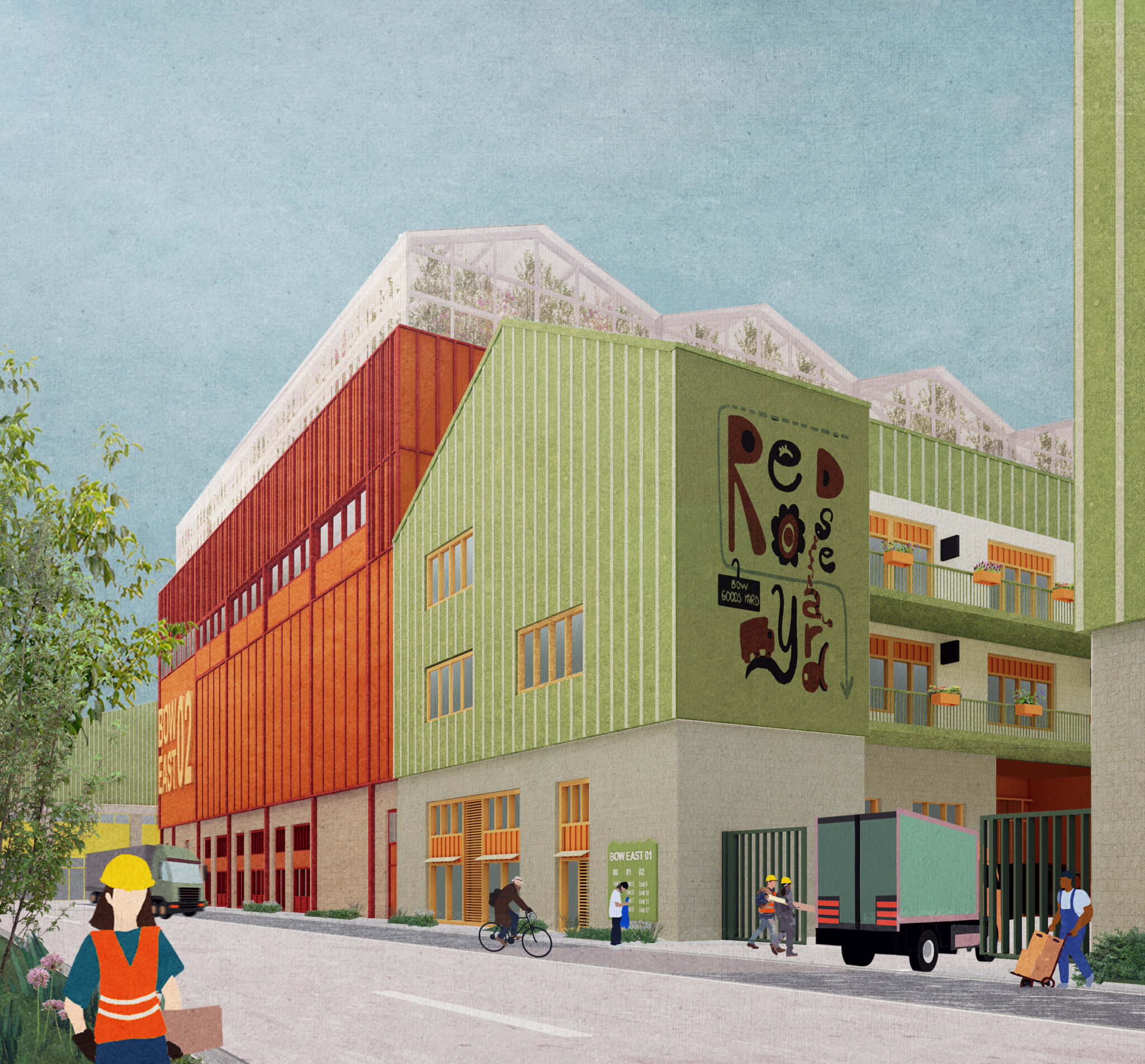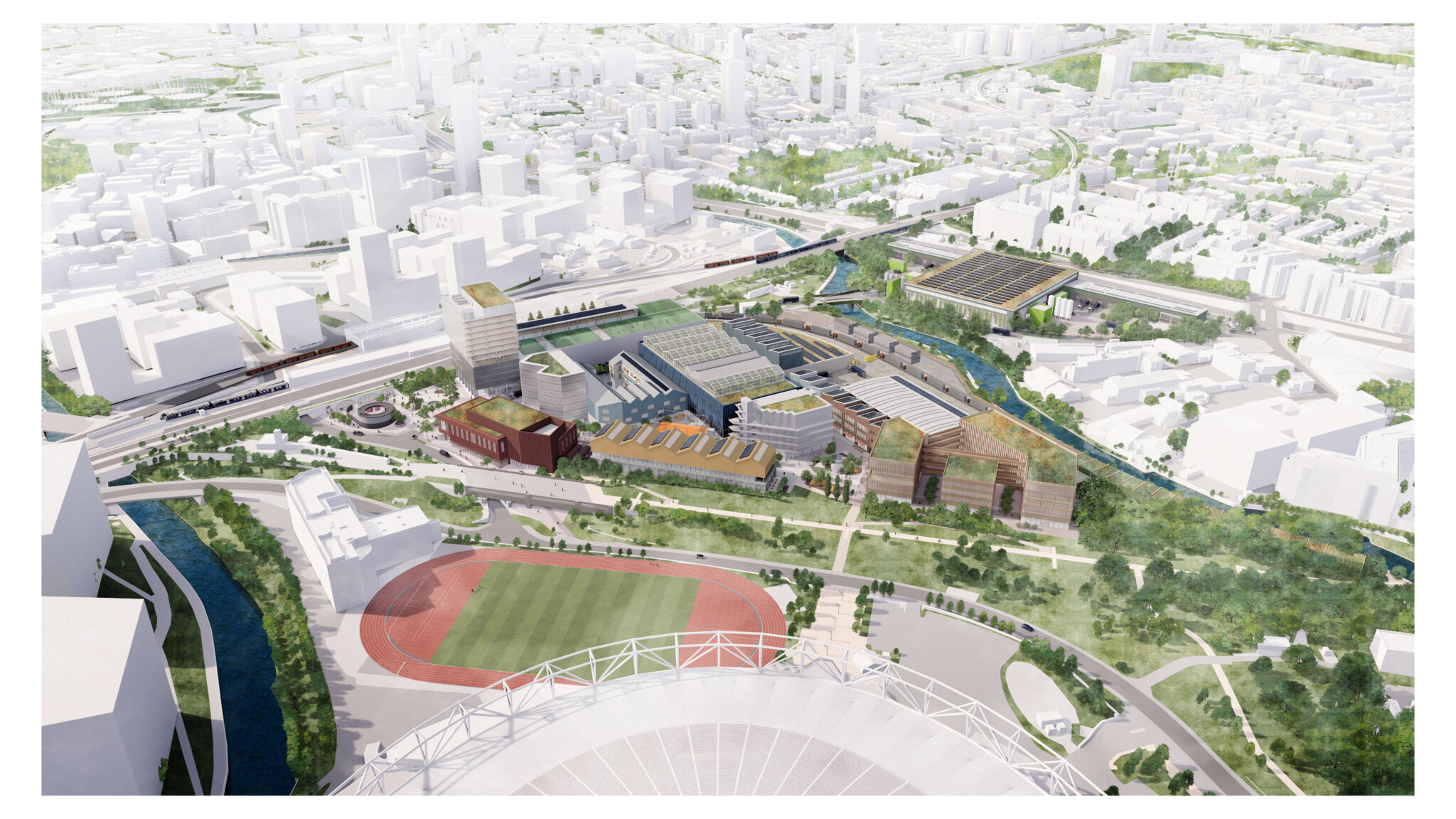Blazej Czuba, discusses delivering on industrial land in London
Associate Urban Designer, Blazej Czuba, discusses delivering on industrial land in London after a recent New London Architecture (NLA) panel discussion.
It was the right kind of panel to explore the complexity of delivering intensive and fit-for-purpose industrial uses for London. A GLA and a borough planner, a developer and an architect discussed how London can continue “delivering” for its residents and businesses on what is a continuously shrinking supply of industrial land.
The recently published London Plan Guidance (LPG) document on Industrial Land and Uses was the centrepiece of the evening, with Jorn Peters from the London Plan team presenting a succinct summary of the document that sets out a clear process of assessing business needs and the opportunities to intensify industrial locations on a site-by-site basis. Jorn reminded the audience that London has lost 18% of its industrial land capacity in the last decade alone in spite of the continuously growing demand and the sky-high industrial values. In this context, much of the debate among the panel focused on industrial co-location and the impact that it may have on the ability of the industrial locations to keep meeting London’s needs.
Alex Keith of SEGRO spoke of the concerns that operators have over locating homes next to industrial uses and how hours-of-use restrictions affect businesses, particularly so in the logistics sector. If London is to remain a 24/7 city, there must be places within it where the making and the delivering can happen throughout the night. While Alex Crane of Chetwoods noted that the logistics of the future may be quieter and less polluting, there appeared to be consensus among the panel that large Strategic Industrial Locations that are suitably protected through designation and through design are key to allowing the industry to intensify, both in spatial and temporal sense.
Co-location therefore cannot work everywhere. Jorn suggested that factors such as freight access points, proximity to sensitive non-industrial uses and plot sizes are critical to the success of the intensification projects. This is consistent with Maccreanor Lavington’s experience on recent industrial intensification masterplans where issues such as land ownership, ability to segregate industrial and non-industrial movement, and clear noise and visual buffers between uses have informed decisions about sites’ suitability for co-location and the type of uses to be co-located.
The type of use is a seemingly often overlooked aspect in industrial planning. Both Anke Boehme of LB Hillingdon and Jorn spoke against a blanket approach to industrial floorspace, and the need to better understand what type of industrial uses and typologies are needed to satisfy local demand. Open storage, large-scale logistics or space for heavy industrial uses, be it concrete batching or construction waste recycling must be protected across London. Similarly, not all operators are to operator from multi-storey sheds or share yards with other operators. And many of these uses are unlikely to sit comfortably right against homes.
As often is the case, it was the ever-increasing housing need point that concluded the discussion. We were reminded of the simple fact that more homes will necessitate more industrial floorspace to service all those homes. Therefore, a blanket approach to intensifying “brownfield” industrial land to meet the housing need is nowhere as simple a solution as some may think.

